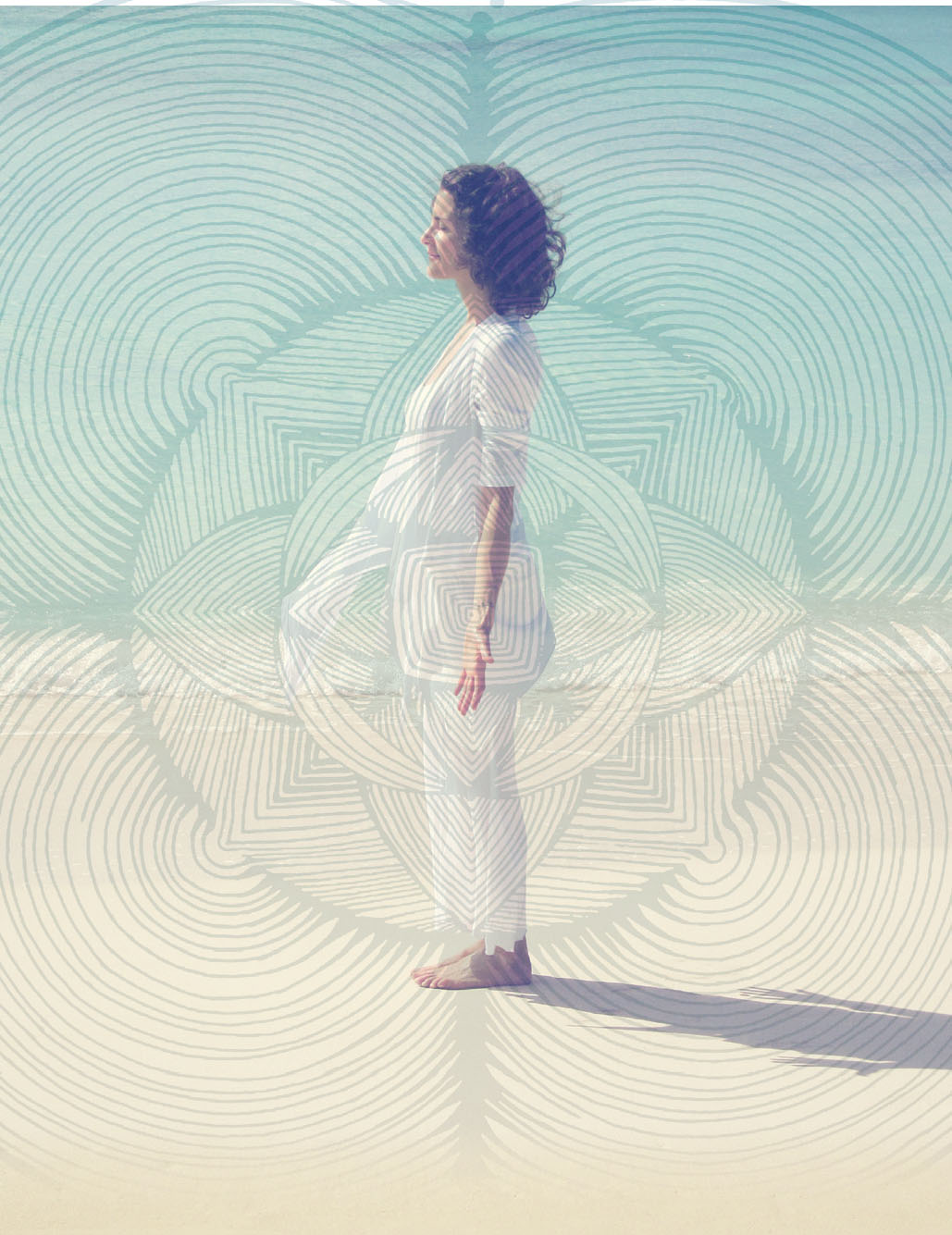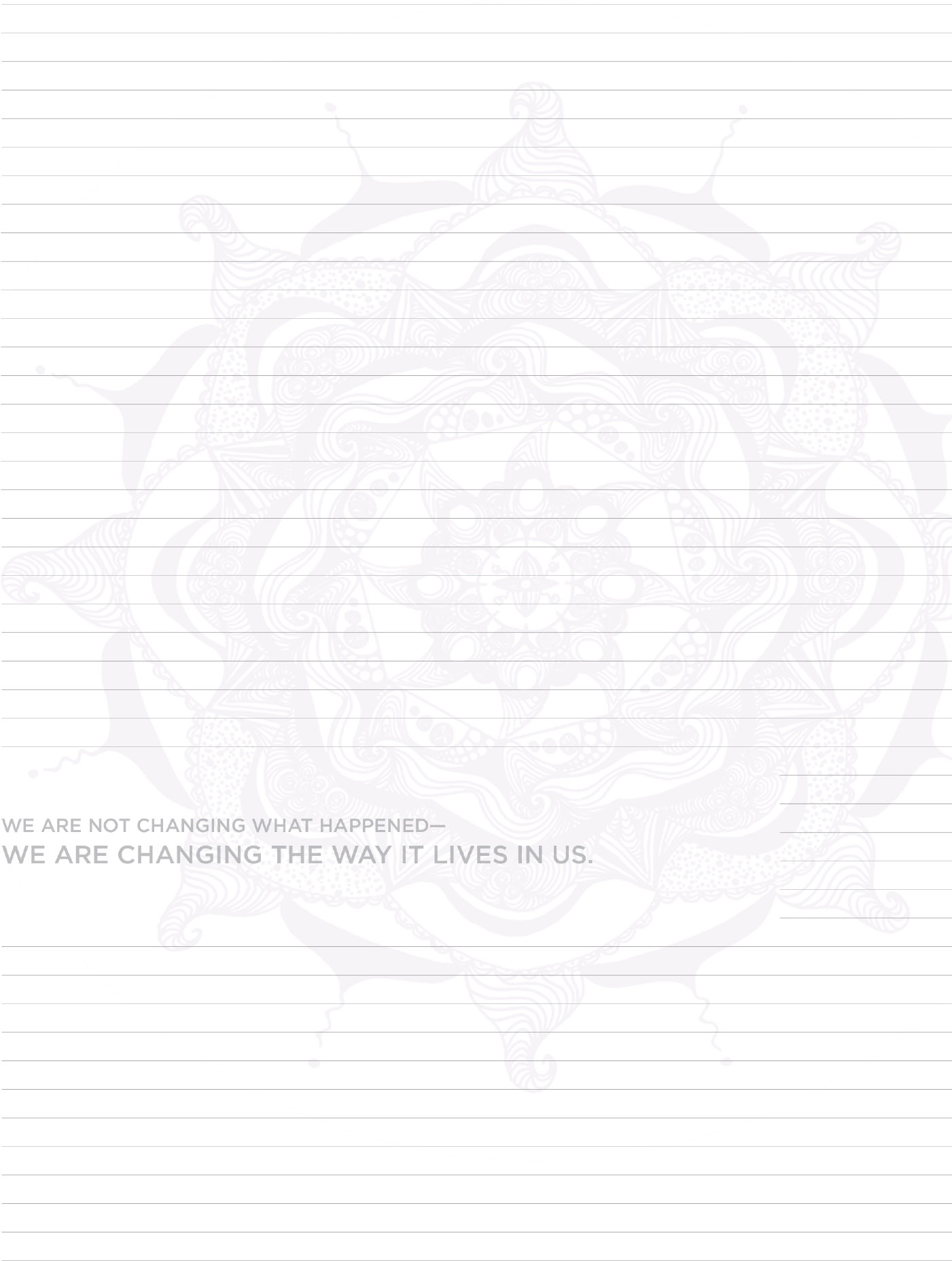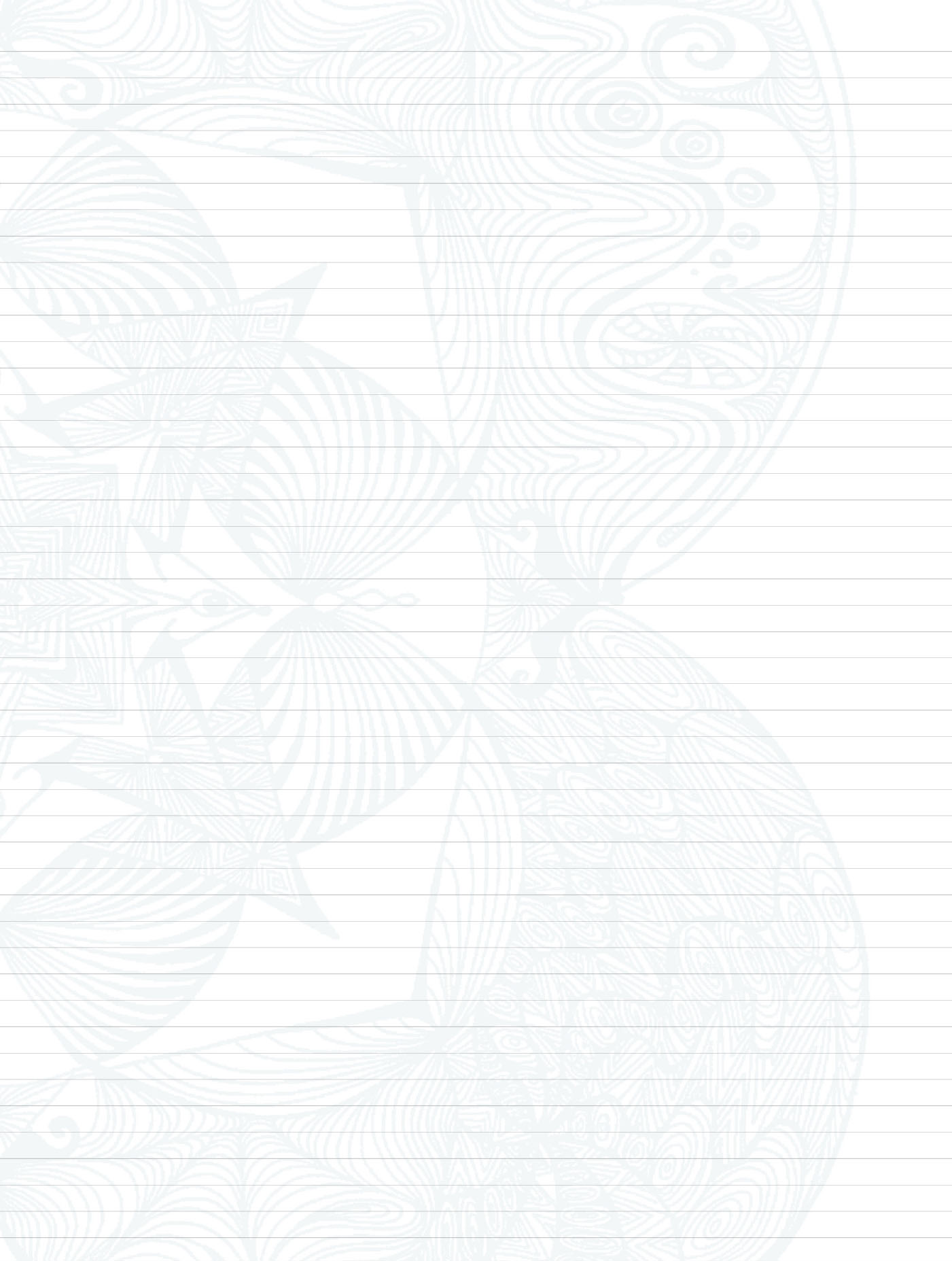CHAPTER THREE
BREATHE AND FIND STILLNESS
photography by ALICE MARSHALL
mandala artwork by SOFIA ESCOBAR
Certain aspects of ourselves that seem like immutable, profound tendencies are actually just impulses, residues we carry, not actually “us.”
Yoga helps us see and reframe it all.

SANKALPA
WELCOME TO YOUR PRACTICE TODAY.
This efficient and effective breathing and meditation practice is for you whether you’ve had years of experience meditating—or no experience at all.
With this practice, we learn how to simply observe.
Turn your palms to face down on your thighs and bring your upper arms to rest alongside your upper body. Close and soften your eyes; turn your attention inside.
My observation:
The impulse and inspiration for this practice: may we practice being more present for ourselves. Why do we run away when we’re scared of something? Why do we keep ourselves busy with work, dishes, cleaning, organizing? Some of us get lazy or complacent; others have specific escapes like drugs, damaging situations, destructive people, or distracting tasks. How can we use our practices of meditation and breathing to be there for ourselves, no matter how dire or scary the circumstances? In the same way that we are there for our most revered friends, can we use this practice to be truly present for ourselves?
Notice the weight of your hands resting on your thighs. Take a few minutes to breathe deeply here.
OBSERVE
Begin to observe where your breathing feels blocked and where it moves freely.
Invite your breathing into every peripheral point in your body. As you observe, notice any aspects of your experience—such as fear, sadness, or doubt—that seem to be immutable, unchangeable presences in your body.
As we explore these aspects that seem ingrained, we begin to learn that they are just residues, outworn coping mechanisms we’ve adopted during our lives. Such tendencies are not here to stay. May we use this practice to see and shift them.
Any reactivity we observe is indicative of the impulses, or states of being, as they pass through us.
As you breathe, you may notice your mind formulating thoughts such as, “I’m angry, I’m sad, I’m terrified,” in which case you’ve named your whole being with the label of this passing state. This practice of noticing asks us to see differently: “Aha! I’m seeing anger passing through my body right now; I’m seeing terror passing through my body right now.”
This meditation nourishes and oxygenates our bodies, which helps us to watch these states, like weather patterns, passing through.

Keep your hands resting with your palms facing down. Watch those little impulses, residues, coping mechanisms, states of being; hold a sense of humor and love for all of your observations.
Breathe as deeply as you can. When you notice something challenging coming up (and It always will), make your breathing bigger and more resonant, throughout your body.
UJJAYI BREATHING
First, inhale and exhale while making a “haaaa” sound, with your mouth slightly open.
Inhale. Exhale.
Now, make the same “haaaa” sound with your mouth closed.
Feel that resonance throughout your throat, and upward into your eyes.

Let the breath resonate in the back of your throat rather than in your nostrils, for the next two minutes. This is called Ujjayi breathing—victoriously uprising breath. Notice how your breathing helps you see and make space between one thought and the next. May our practice help us see clearly to reframe negativity and choose responses that are helpful and uplifting.
SOLAR PLEXUS
To locate your solar plexus, follow your bottom ribs with your fingers—from your waist to the center of your chest, where your bottom ribs meet. Rest your left hand there, on your solar plexus, at first; keep your right hand on your right thigh for now.
ASK: How can I be there for myself? Why is it that I can be so present for my friends and people I love and not for myself?
With this practice, breathe and connect to this source of power in your body. Keep your hand there, lean back into your seat, and breathe this space open.
ASK: When a thought comes, does this central space in my body close or open in conjunction with that thought? If the space closes with a certain thought, there is more room to grow and expand that space. When we make more space physiologically and architecturally in the body, we have a larger backdrop on which to dissipate and dissolve doubtful trains of thought.
Place your right hand on top of your left.

ANY TIME: In a pose, seated, standing, in a conversation or interaction—place your hands in this way and open that space with confidence, clarity, and power. This central point is a source of power and presence.
NOTE: This power isn’t power over anyone. We’re cultivating power to be present for ourselves. Everyone near us benefits from that quality of presence. Keep breathing here for a few more breaths.
Release your hands down onto your sides and turn your palms up.

As we breathe, we are demystifying, breaking down what we perceive to be overcoming us, overtaking us.
Moods, states, impulses—we are breaking these down into energy, knowable parts, seeing them like weather patterns, like clouds, passing through us at any given time.
We are seeing that central point of stillness.
We are giving ourselves the opportunity to author appropriate responses to each situation that arises.
May we learn to allow the stillness in our hearts to live in our minds.
Keep your palms facing up and breathe into your solar plexus. Now, focus on filling the back and sides of that space with your breathing.
Ten more breaths here.
JNANA MUDRA
Bring your index fingers and thumbs to touch in Jnana Mudra, the seal of wisdom. With this mudra, we seal and absorb the wisdom of our practice into our being. This sweet sitting practice will impact all we do.
When you feel reactive, this practice brings pause.
When you feel rushed, this practice brings stillness.
When you feel closed, this practice brings opening.

Notice the baseline of softness and openness
![]()
always present
AWAKENING
Fold your hands in front of your heart in prayer. Continue to breathe deeply and bring awareness to each breath as it arrives and is gently released.
Any time you are feeling doubtful, disconnected, or numb, sit down for this practice. Take a few breaths and watch. Place your attention on the space of your solar plexus, and place your hands there gently. Feel this power center and fill your interior space with the most attentive, loving nourishment.

May we connect to this space and shift toward healing.
Bring your chin to your chest.
To the respectful and complete healing of your body, your mind, and your heart, we bow.
NAMASTE.
A PDF OF THE FOLLOWING WORKBOOK PAGES IS AVAILABLE AT SOUNDSTRUE.COM/STORE/ARTOFATTENTION.





